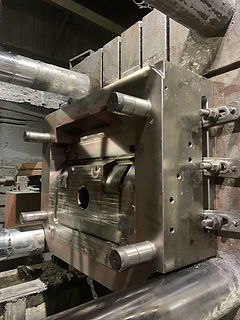Stable, Like a CAMEL
Important Notice:
Our company name is "Shenzhen Camel Die". Our email address is @cameldie.com.
Please note that "Camel Die" is a separate entity and is not affiliated with us in any way.
We urge our customers and partners to verify the correct contact information to avoid any confusion or miscommunication.
Failure Mode And Analysis Of Die-casting Dies For Aluminum Alloy
The vigorous development of the automobile industry and the need for lightweight, so that Aluminum alloy Die-casting is to the large-scale and complex direction of rapid development. Die-casting dies as the main equipment of Die-casting production is to achieve the basic guarantee of high quality and efficient production of Die-casting, its life directly affects the quality of Die-castings, production, as well as the production cost of enterprises and market competitiveness.
At present, in most countries, the low service life of the Aluminum alloy Die-casting dies problem becomes the main factor that restricts the further development of die-casting industry, the failure mode of Aluminum alloy die-casting dies is more problematic.

1. Working environment of Aluminum alloy Die-casting dies
Aluminum alloy Die-casting dies as a carrier of high temperature, high pressure, high speed Aluminum liquid, its working environment is extremely harsh. When working, the cavity surface is repeatedly flushed by the Aluminum liquid, the specific pressure is more than 40MPa, the inner sprue speed is 30~65m/s, the mold cavity surface temperature can reach 1112°F or more instantly, and after opening the mold, the mold cavity surface temperature drops sharply due to spraying and other reasons.
This kind of hot and cold alternating effect in the die-casting cycle repeatedly, making the mold cavity surface temperature changes dramatically.
2. Failure mode and analysis of Die-casting dies
According to the field statistics, the common failure forms of Die-casting dies are cracked, cracking, erosion, adhesion, and deformation, etc. Among them, cracked, cracking, erosion, and adhesion mainly occur in the mold cavity surface.
_j.jpg)
_j.jpg)
_j.jpg)


